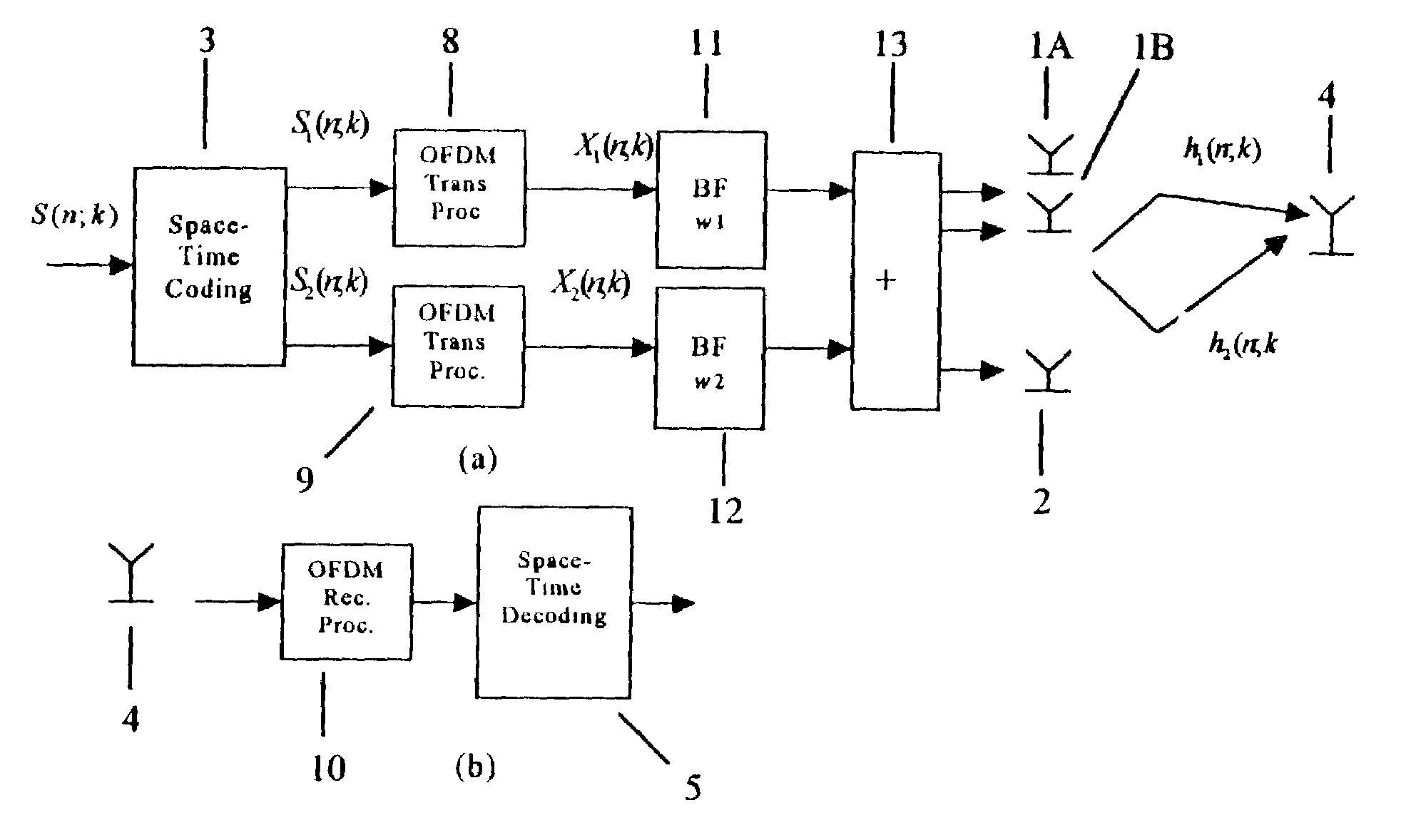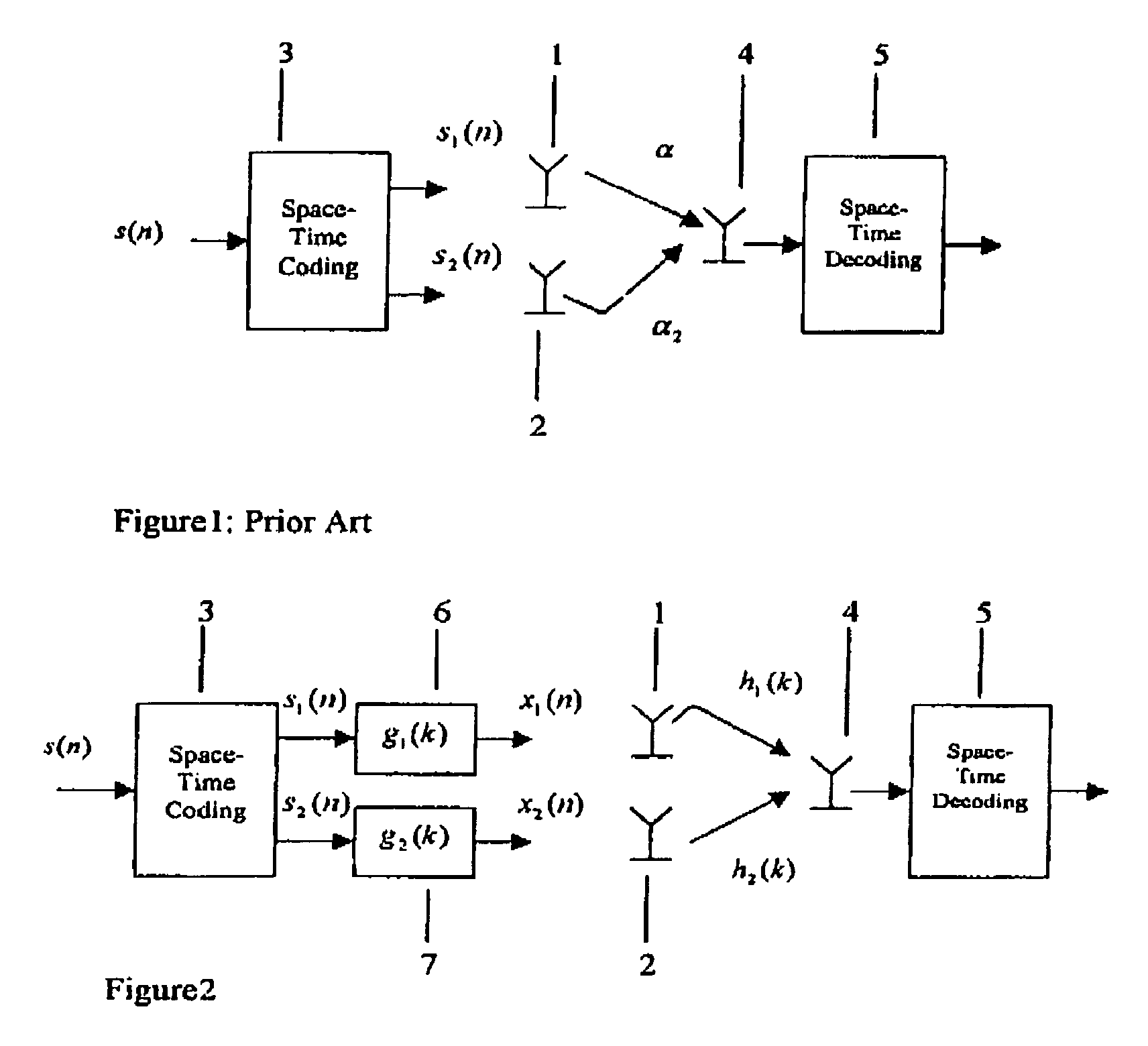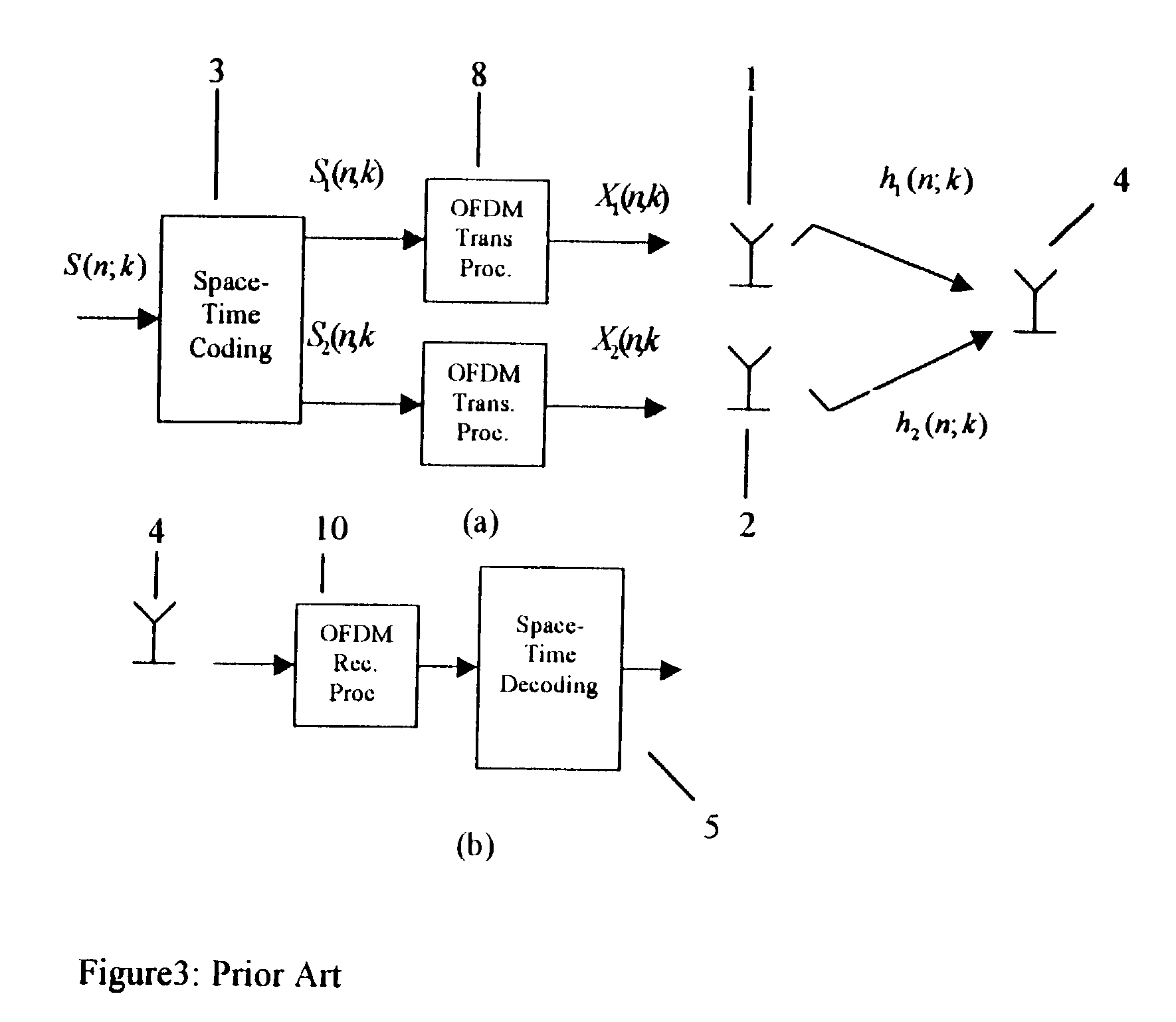Wireless communication apparatus and method
a wireless communication and apparatus technology, applied in the field of wireless communication systems, can solve the problems of inability to achieve diversity gain and beamforming gain simultaneously, path loss, multipath fading,
- Summary
- Abstract
- Description
- Claims
- Application Information
AI Technical Summary
Benefits of technology
Problems solved by technology
Method used
Image
Examples
Embodiment Construction
[0055]The present invention revolves around the use of multiple antennas at the base station to improve the downlink performance of a wireless communication system. Downlink beamforming is effective in limiting interference pollution, which is of critical importance especially in multimedia communications. Transmit diversity is a powerful technique when receive diversity is impractical, especially for mobile terminals with size and / or power limitations. It can also be used to further improve downlink performance even though receive diversity is available.
[0056]In a multipath propagation environment, a receiver acquires several time-delayed, amplitude-scaled and direction of arrival (DOA) dependent versions of a transmitted signal. When the maximum time delay between the first-arrived and last-arrived versions of a signal along the various paths is smaller than the symbol interval, these paths are not resolvable in the time domain. However, these paths are resolvable in the spatial d...
PUM
 Login to View More
Login to View More Abstract
Description
Claims
Application Information
 Login to View More
Login to View More - R&D
- Intellectual Property
- Life Sciences
- Materials
- Tech Scout
- Unparalleled Data Quality
- Higher Quality Content
- 60% Fewer Hallucinations
Browse by: Latest US Patents, China's latest patents, Technical Efficacy Thesaurus, Application Domain, Technology Topic, Popular Technical Reports.
© 2025 PatSnap. All rights reserved.Legal|Privacy policy|Modern Slavery Act Transparency Statement|Sitemap|About US| Contact US: help@patsnap.com



